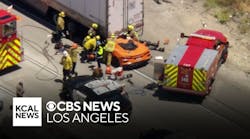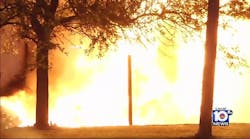The Principles of Battle Part 5
Tactical Coordination
As we look at the fireground tenants found in the Principles of Battle, the tenant of tactical coordination cannot be understated. In the dynamics of today fireground, we find the absolute need for tactical coordination to be a sharpened tool in the Incident Commanders tool box. Tactical coordination is not a new idea and definitely not completely understood by all fireground commanders. A review of any recent NIOSH report will clearly demonstrate the lack of understanding, or the lack of tactical consideration of coordinated fireground activities and events put into play by the Incident Commander.
In the absence of unlimited resources, the Incident Commander must prioritize the fireground into task and tactics which will provide the greatest benefit and outcome in the shortest timeframe with the least effort or strain on personnel. To do so the Incident Commander must accept that certain, undeniable risk must be taken in non- vital areas to enable him to achieve the superiority at the decisive place and time in an effort to gain the tactical advantage. Since agencies may find challenges in mustering adequate resources in a timely fashion to mount a tactical advantages offensive operation. Not to mention the difficulties establishing all the pre-built efficiency considerations necessary to complete the filling of all disciplines, the incident commander must use the concept of force multipliers and economy of force with tactical coordination while applying his will into the plan.
Time, however, tends to be our greatest enemy. Since we cannot push the pause button on the fireground we must act with swift and aggressive movement void of wasteful action. In the immortal words of Vince Lombardi, “The achievement of any organization is the combined effort of each individual”. In other words, working together as a team in coordination on the fireground will result in the desired outcome of the Incident Commander. To do so, he clearly utilizes those resources on hand together for the greater good of the outcome. Hence, force multiplier as part of economy of force.
So, how do we apply these tasks in concert with our operations to be successful on the fireground? First, let’s look into the most recent works of NIST. NIST showed in a landmark study that the crew size does make a difference in all aspects of the fireground tactical application. In that, with more personnel on scene the incident will stabilize much faster than with fewer personnel. This is no great surprise to the fire service but now it is science. With that said, many will still battle the need for appropriate staffing on the fireground and until such time as the entire American Fire Service has adequate staffing levels throughout, we must approach each incident with the mindset of coordinating actions which create a force multiplier in an effort to gain the tactical advantage in the shortest timeframe.
Let’s suppose we have 6 to 8 personnel on scene of a working single family dwelling fire. The fire is content, compartment based fire, which has not spread to the structural elements of the occupancy. The indications from the 360 or DRA indicate the compartment has transitioned from the growth from the growth phase to the fully developed phase and is spreading internally within the structure. The Alpha Division shows heavy black smoke, under high velocity and turbulent I nature at, while the seat of origin of the compartment is located in the rear Bravo/Charlie Corner. Although one window is venting pressurized fire, the development within the enclosure continues to build in intensity. As you completed your 360 or DRA you observed a window on the Delta division in which you could visibly observe the curtains in the room. What does this scenario paint? What immediate actions would you take? What tactical coordination would you employ to gain the tactical advantage on this enclosure? And lastly, what considerations would you base your actions upon?
There is no perfect answer and no answer is any more correct than the next. Why, because many variables are in place based upon a number of unknown factors. However, we can surmise that the need to coordinate the three main components of (1). Establishing a strong command structure, (2) initiating an attack (3). Providing adequate and appropriate ventilation operations in unison will be the key to allowing a successful search to be conducted. The importance of coordinating all three main components will be the key to the success of the operations. Why? Easy, the strong command culture will enable the companies assigned to the tactical functions to simply apply their skill sets in a tactical and task driven function. Second, the initiation of fire attack to stop the rapid advancement of the enclosure fire will provide the platform for all other tactical functions and task. However, based upon the description of the incident, this must be coordinated with the ventilation operations to providing the working platform of efficient and effective operations on the interior of the structure. With that said, I have already utilized the first 6 personnel on scene and if I were to surmise two additional personnel were on scene for a total of 8 and based upon the indications of a potential area of refuge within the enclosure, those personnel would be in a search operations mode until a primary and secondary all-clear could be communicated.
As I said, I understand certain agencies follow procedures which may or may not allow them to operate in this fashion. However, as stated earlier, “The Incident Commander must accept that certain, undeniable risk must be taken in non- vital areas to enable him to achieve the superiority at the decisive place and time in an effort to gain the tactical advantage”. In other words, the Incident Commander must fully understand the need to coordinate the available resources in a manner which provides the greatest benefit to the customer. The customer is first and foremost the citizen, followed by the internal customer the firefighter. We offer a higher degree of protection for both parties when we move away from assigning the limited resources which we have available to non-vital task based upon the presentation of the incident and move toward using resources which will force multiply the effects of one another when combined and coordinated as part of economy of force on the fireground.
With that…Sit back and enjoy the cuppa..





